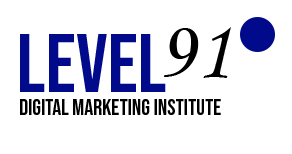Ceiling fans have been a staple in households and commercial spaces for decades, offering a cost-effective and energy-efficient solution for air circulation. However, with advancements in technology, modern ceiling fans have evolved beyond simple air movement devices to incorporate innovative features that enhance their functionality and efficiency.

Innovative Design
One of the latest trends in ceiling fan technology is the integration of sleek and modern designs that complement various interior styles. Manufacturers are focusing on creating fans with slimmer profiles, streamlined blades, and contemporary finishes to blend seamlessly into any room decor. Additionally, customizable options such as reversible blade designs allow users to adapt the fan to changing aesthetics or seasonal preferences. These advancements are particularly evident in the design of ceiling fans with light, where the integration of lighting elements is seamlessly incorporated without compromising the fan’s aesthetic appeal or functionality.
Enhanced Energy Efficiency
Energy efficiency is a key consideration for today’s consumers, and ceiling fan manufacturers are addressing this demand by developing models with advanced motor technology. These motors consume less electricity while delivering powerful airflow, resulting in reduced energy consumption and lower utility bills. Some models even feature DC motors, which are significantly more energy-efficient than traditional AC motors.
Smart Controls
The emergence of smart home technology has revolutionized the way we interact with household appliances, and ceiling fans are no exception. Many modern fans come equipped with smart controls that allow users to adjust settings remotely via smartphone apps or voice commands. These features not only enhance convenience but also enable users to optimize energy usage by scheduling operation times and adjusting fan speeds based on occupancy or ambient temperature.
Integration of Lighting
In response to the growing demand for multifunctional fixtures, manufacturers are incorporating lighting elements into ceiling fan designs. Ceiling fans with integrated lights offer the dual benefit of illuminating a space while providing efficient air circulation. LED lighting technology is commonly used in these fixtures due to its energy efficiency and long lifespan, further enhancing the overall sustainability of the product. Whether it’s a subtle glow for ambiance or bright task lighting, ceiling fans with illuminations offer versatility for any setting.
Enhanced User Experience
Moreover, manufacturers are exploring innovative ways to enhance the overall user experience. This includes incorporating features such as remote controls, allowing for effortless adjustment of fan speed, direction, and lighting settings from anywhere in the room. Some ceiling fans even boast Wi-Fi connectivity, enabling seamless integration with smart home ecosystems for enhanced automation and control.

Advanced Aerodynamics
Another notable development in ceiling fan technology is the incorporation of advanced aerodynamics and blade designs. By optimizing blade shape and pitch, engineers have been able to maximize airflow efficiency while minimizing noise generation. This results in quieter operation and more effective air circulation throughout the room, creating a comfortable environment for occupants.
As technology continues to advance, the humble ceiling fan has transformed into a sophisticated and versatile appliance that goes beyond mere air movement. With features such as innovative design, enhanced energy efficiency, smart controls, and integrated lighting, modern ceiling fans offer a blend of style, functionality, and sustainability. Whether cooling a room in the summer or improving air circulation year-round, these innovative solutions ensure optimal comfort and convenience for users.





